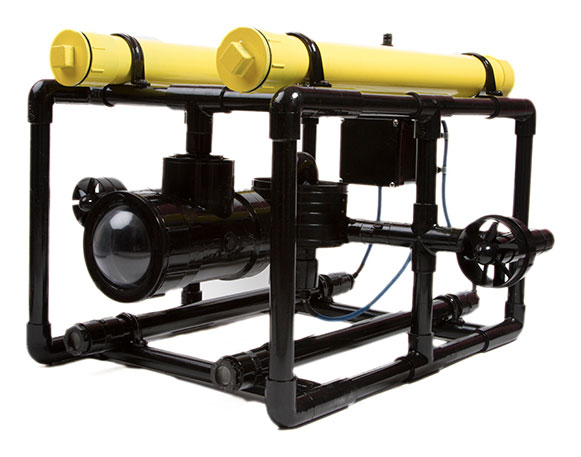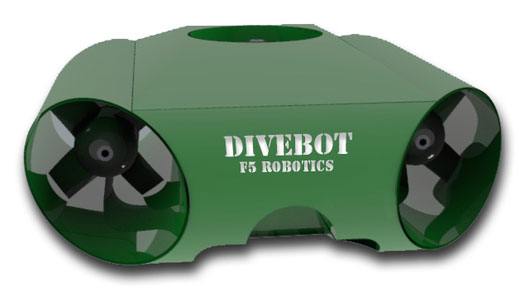Good news, aspiring oceanographers: affordable, underwater video platform is on the way
posted Tuesday, February 12, 2013 at 2:47 AM EDT

When you really stop and think about it, it's amazing how far digital photography has come in the last decade. Ten years ago this month, we were thrilled by the brand-new Canon EOS-10D and Pentax *ist-D, a duo of 6-megapixel SLRs priced at US$2,000 and US$1,700 respectively. In fact, even a 3-megapixel compact could command a similar pricetag at the time, with the right mix of features. For a fraction of the price, today's cameras are leaps and bounds ahead in terms of image quality, and many include features we'd never have dreamed of, back in the day: full-time phase detect autofocus, wireless data transfer and charging, uncompressed high-def video capture, and more.
It's not just the cameras themselves that have advanced, though. The ways in which we use them are evolving, too. Go-anywhere, lifeproof cameras are commonplace. We mount them on our cars, bikes, and even ourselves for unique first- and third-person perspectives on the action. We even attach them to weather balloons and affordable unmanned aerial vehicles, safely shooting views anywhere from hundreds of feet in the air to the very edge of space, all from the safety -- metaphorically speaking -- of our very armchairs. A new project on crowd-funding site Indiegogo aims to take our cameras in another direction without breaking the bank.

Saskatoon, Canada-based tech company F5 Innovations, founded a couple of years ago, sets itself the goal of creating land, water, and airborne video platforms that bridge the gap between affordable consumer hardware and expensive, state-of-the-art rigs. Through its F5 Robotics division, the company is planning to launch a new remotely operated underwater vehicle capable of filming at depths to 500 feet beneath the surface, well beyond what's possible even for fairly experienced deep divers without very specialized equipment.
The ROV, dubbed DiveBot, will be offered in several trim levels, starting from a basic chassis and thrusters suitable for a home build at a preorder price of just CA$600. For another CA$350 or so, a preorder of the standard version will add a high-definition video camera rated for use at up to 1,000 foot depths and capable of capturing at 720p resolution, and a dual-joystick remote control unit with 50-foot Kevlar-reinforced tether. Power comes a standard 12V battery. You'd need to supply your own display, attached via the remote's composite video output, to be able to make use of this CA$950 version, and only 15 units are available at this price. Retail pricing is expected to be nearer CA$1,200. The top trim level is the DiveBot Deluxe, priced at CA$1,500 for the first five units preordered. This will add a seven-inch color LCD screen and triple the tether length to 150 feet, and will come in its own waterproof Pelican case. Final retail pricing for this trim level hasn't been stated.
What's truly incredible to us, though, is that these prices are well below what you'd have paid for a consumer digital SLR just a decade ago!

With its relatively affordable pricing, the DiveBot could enable law enforcement and business use even on fairly limited budgets. Of course, there's no guarantee that the project will meet its funding goal of CA$7,500. With 29 days to go as we speak, having only just launched, DiveBot hadn't received any funding at all at press time. F5 will doubtless face other hurdles on the way to commercializing the DiveBot, as well, although a look at its current product line suggests it has the experience necessary to handle these. If it's successful, underwater photography at significant depths could finally be within reach of hobbyists who don't have the technical know-how to build their own ROV from scratch -- and video filmed far beneath the waves might finally be on its way to becoming as pervasive as that shot on land and in the air.
More details and information on funding options covering everything from CA$5 for a thank you email to CA$4,000 for a corporate sponsorship can be found on the DiveBot Indiegogo project page.
